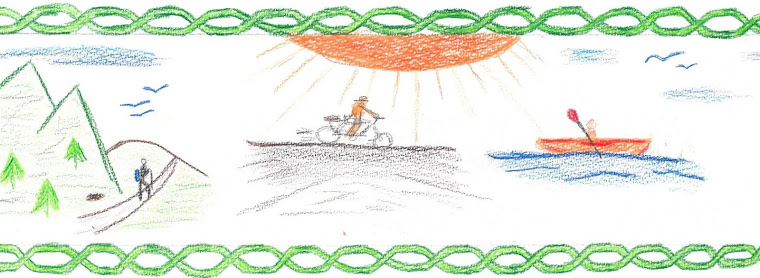Lectionary
Ruminations 2.0 is a revised continuation of Lectionary Ruminations. Focusing on The
Revised Common Lectionary
Readings for the upcoming Sunday from New Revised Standard Version (NRSV) of the Bible, Lectionary
Ruminations 2.0 draws on nearly thirty years of pastoral experience. Believing that the questions we ask are often
more important than any answers we find, without overreliance on commentaries I
intend with comments and questions to encourage reflection and rumination for
readers preparing to teach, preach, or hear the Word. Reader comments are
invited and encouraged. All lectionary
links are to the via
the PC(USA) Devotions and Readings website.
1:1
Did Isaiah have only one vision. What is a vision? Does it matter
that Isaiah was the son of Amoz? When were the days of these kings and what
were their reigns like?
1:10 Why are the rulers of Sodom and the people of Gomorrah singled out?
1:10 Why are the rulers of Sodom and the people of Gomorrah singled out?
1:11 Is this an
anti-institutional rant?
1:12 Had the LORD not
previously asked for sacrifices?
1:13 This could sound like an indictment
of corporate worship, or at least high church liturgical worship with smells
and bells.
1:14 The Lord is
beginning to sound like a reforming iconoclast.
1:15 What does the mention of
stretched out hands refer to? How are the people’s hands full of blood? Does
the LORD ever not hear our prayers?
1:16 What sort of washing is
envisioned?
1:17 A good progressive call to
social and economic justice, especially in the midst of a Presidential
campaign!
1:18 What does “argue it out”
mean? Is this a legal reference? Why might sins be the color of
scarlet and crimson?
1:19 Where else in Scripture do
we find a connection between obedience and a vibrant land? Is there
a similar idea expressed in the Grail Legend?
1:20 Following upon the preceding
verse, this almost sounds like a “two ways” proposition.
51:1
How and why does God summon the earth? What does it mean to summon the earth?
51:2 If God is omnipresent, why
does God shine forth out of Zion? Can God not shine out of anywhere?
51:3 This sounds like a storm
God. What about the God of sheer silence?
51:4 What does
calling to the heavens and to the earth have to do with judgment?
51:5 I thought God made a
covenant, not the faithful ones. What was the sacrifice?
51:6 How do the heavens declare
God’s righteousness? Can the Hubble Space Telescope help us see this
declaration?
51:7 Why does God testify
“against” Israel?
51:8 Then why does God rebuke?
51:22 This verse makes God sound
like a ravishing lion.
51:23 This verse, as well as 51:8,
sound contradictory to the reading from Isaiah.
11:1
This definition sounds antithetical to those who seek to “prove” God’s
existence. I like this definition of faith, but I also like Calvin’s
definition of faith as “a firm and certain knowledge of God's
benevolence toward us, founded upon the truth of the freely given promise in
Christ, both revealed to our minds and sealed upon our hearts through the Holy
Spirit." (Institutes 3.2.7)
11:2 Note that “ancestors” is plural,
so who else might Paul have had in mind in addition to Abraham?
11:3 Why “worlds” plural? How
many worlds are there? Which creation account might Paul be alluding to?
11:8 Abraham is established as
the archetypal faithful person. Why is Sarah not mentioned?
11:9 Why was staying in the
promised land after he arrived an example of Abraham’s faith?
11:10 What city did Abraham look
forward to?
11:11 Sarah is
finally mentioned!
11:12 Modern biology
would say “from these two people”.
11:13 Who are these? Are
we talking about more than Abraham, Sarah, Isaac and Jacob? Are we
all still not strangers and foreigners on the earth?
11:14 Where do
Christians find their homeland?
11:15 One should
never look back?
11:16 How does this verse influence
Christian attitudes to the Nation of Israel and the physical Holy Land? What
is the relationship between the “better country” and “the city prepared for
them”?
12:32
What was the little flock afraid of? How little was it? What are YOU
afraid of? What is the relationship of “the kingdom” in this verse to the “country”
and “city” in Hebrews 11:16?
12:33 How do capitalist American
Christians, especially “Prosperity Gospel” Christians, reconcile their economic
behavior with this verse?
12:34 Where is YOUR treasure?
12:35 What might be a present day
image or metaphor to capture the idea of this verse – perhaps “Have your clothes,
shoes, flashlight, and cell phone close at hand”?
12:36 Does the fact that the
master was returning from a wedding banquet rather than some other function
influence the way we interpret this passage?
12:37 The servers become the
served. The master becomes the servant.
12:37-38 How do we deal with
“slavery” language with all its racial, cultural, and historic baggage?
12:39 The introduction of a
“thief” seems to confuse the metaphor. Can we drop this verse and
still preserve the message?
12:40 What is the historical
significance of “Son of Man” imagery and language? Is the Son of Man
coming like a master returning from a wedding banquet or like a thief? Does it
make a difference?
ADDENDUM
I am currently a Member at Large of Upper Ohio Valley Presbytery of the Presbyterian Church (U.S.A.). I am a trained and experienced Interim Pastor currently available to supply as a fill-in occasional guest preacher and worship leader or serve in a half-time to full-time position.
I am currently a Member at Large of Upper Ohio Valley Presbytery of the Presbyterian Church (U.S.A.). I am a trained and experienced Interim Pastor currently available to supply as a fill-in occasional guest preacher and worship leader or serve in a half-time to full-time position.

